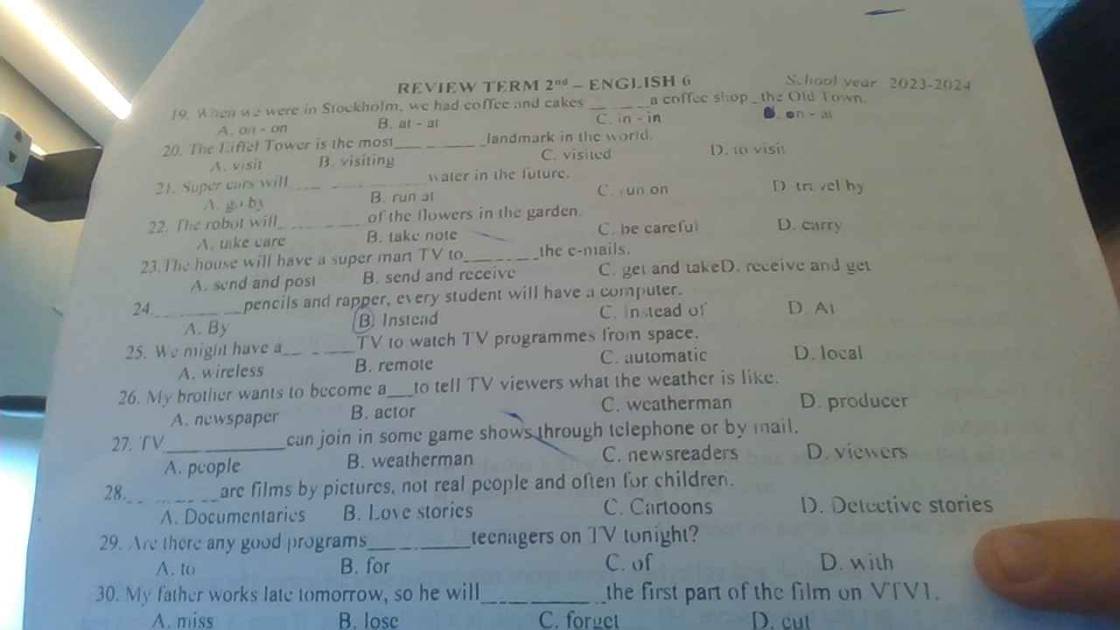III.Read the passage and choose the correct answer A, B, C or D to complete the passage. (1.0 pt)
1. It takes you about 16 hours to travel from New York to Beijing. Beside, you also have to wait at the airport, and sometimes you have to transfer onto a different airplane. If you add all of that extra time, the trip will take at least 20 hours. But in the future, this trip might only take 2 hours.
Nowadays, a private company (1)__________ developing something called ET3 which stands...
Đọc tiếp
III.Read the passage and choose the correct answer A, B, C or D to complete the passage. (1.0 pt)
1. It takes you about 16 hours to travel from New York to Beijing. Beside, you also have to wait at the airport, and sometimes you have to transfer onto a different airplane. If you add all of that extra time, the trip will take at least 20 hours. But in the future, this trip might only take 2 hours.
Nowadays, a private company (1)__________ developing something called ET3 which stands for “evacuated tube transport technology”. Here is how it works. A tube goes all way from New York to Beijing. The tube is only a few meters wide. Capsules use move through the tube. Six (2)____________ can sit in one capsule. The capsules use electricity instead of gasoline. The capsules can travel (3)____________ 6.500 kilometers per hour. That is much faster than airplane – most modern airplanes usually only fly at about 800 kilometers per hour.
So how is this possible? How can these capsules travel so fast? The answer is that there is no air inside the tube. When airplanes fly, they (4)___________have to move through the air. The air slows the airplanes down. (5)____________Because there is no air in the ET3 tubes, the capsules are able to move at a very high speed. Besides, the capsules are quite light. They only weigh 183 kilograms.
It is exciting to think of how ET3 will change in the future. Maybe someday, you will be able to have lunch in New York and dinner in Beijing.
|
1. A. is
|
B. are
|
C. am
|
D. was
|
|
2. a person
|
B. people
|
C. a child
|
D. a boy
|
|
3. A. to
|
B. for
|
C. about
|
D. on
|
|
4. has
|
B. had
|
C. haved
|
D. have
|
|
5. A. Because
|
B. so
|
C. to
|
D. but
|








1 grandparents
2 cars
3 zoo
4 peacocks
5 bus